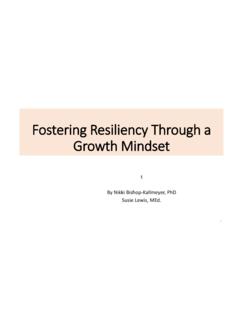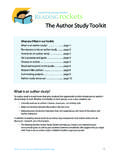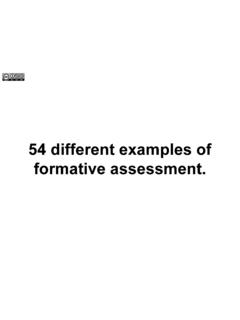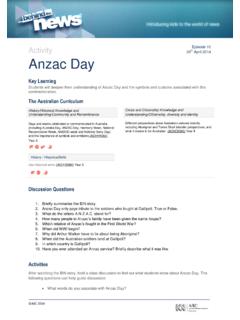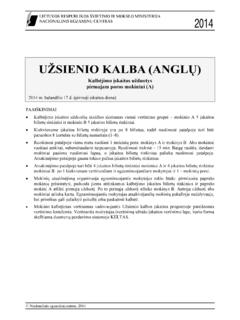Transcription of PICTURE DESCRIPTION - ENGLISHCENTER
1 PICTURE DESCRIPTION GUIDELINES, TECHNIQUES & EXAM TIPS M CRISTINA C. B. [A o] PICTURE DESCRIPTION A PICTURE DESCRIPTION is an ideal way of practising your English vocabulary in all sorts of fields. Pictures provide serious language practice and can be invaluable in the classroom for stimulating discussion and bringing enormous variety to lessons. They also provide the teacher with a flexible and convenient tool to test many different things in exams.
2 GUIDELINES, TECHNIQUES & EXAM TIPS Here you have some techniques and exam tips I have put together to help you describe a PICTURE or photograph. Study them carefully and decide on how to structure your PICTURE DESCRIPTION . Don t worry if you find it a bit difficult at first, we ll practise a lot to make things easier in time. I ve also included some exercises that we ll correct in a future revision class.
3 After all, as the saying has it: A PICTURE paints aA PICTURE paints aA PICTURE paints aA PICTURE paints a thousand wordsthousand wordsthousand wordsthousand words M. Cristina C. B. IN THE IT LOOKS IN THIS LET ME AS I SEE IT AT THE QUESTIONS What happens when I have to describe a PICTURE ? It s simple. The examiner gives you a PICTURE and asks you to say what you see. He or she may also ask you to give an opinion or comment on the content of the PICTURE .
4 What does this test? That depends on what the examiner is looking for. It can test fluency, vocabulary, stress, pronunciation and rhythms of speech, ability to communicate, grammatical accuracy and interactive communication. And probably it can test them all at the same time. How should I approach this type of test? Here are some useful techniques and guidelines for describing pictures. You will not need to use all of them every time but it will be useful to be familiar with them.
5 GUIDELINES TECHNIQUES 1. Describe where things are in the PICTURE Make sure you are familiar with the language used to describe where something is in a PICTURE . Check that you know how to use the phrases in the boxes below: IN THE TOP AT THE TOP IN THE TOP LEFT (-HAND) RIGHT (-HAND) CORNER CORNER ON THE LEFT (-HAND) IN ON THE RIGHT (-HAND)
6 SIDE THE SIDE MIDDLE IN THE BOTTOM IN THE BOTTOM LEFT (-HAND) RIGHT (-HAND) CORNER AT THE BOTTOM CORNER IN THE BACKGROUND FOREGROUND Fill in the gaps with the correct position language: 1.
7 _____ 2. _____ 3. _____ 4. _____ 5. _____ 6. _____ 7. _____ 8. _____ 9. _____ DO DON T Look carefully at the photos. Think how to describe what you can see. Take your time to do it. Be as precise as you can when you describe the photo itself. Use some position language if it helps. Use present continuous verbs to describe what is happening. If there is a person or people in the photo, you will need to describe their appearance. Answer questions as fully as possible.
8 Keep talking, give details, explain your point, ask questions, paraphrase, don t get stuck on Any device that demonstrates that you can carry a topic through will help your performance. Try to direct the conversation towards something you are interested in and can talk about easily. Speak naturally and be animated! Keep eye contact with the examiner, be friendly and show a positive attitude. Don t worry if you don t understand immediately what is going on in the PICTURE .
9 Don t worry if you don t know the precise words for what you can see; use alternatives. Don t use the present simple to describe what is happening. Don t use general language to describe people. You should use vocabulary of the level required. Don t give too many one - or two word answers. Avoid answers which are single words or lists. Silence is you enemy! If you are not a talkative person by nature, you must make an extra effort for the test.
10 Don t feel you have to stick rigidly to the subject. Don t give complicated explanations if you are not sure. Don t be shy! This is your chance to show how well you can speak. Smile and relax! 2. Don t be too certain Sometimes you cannot be sure what is happening in a photo or PICTURE . Use appropriate language to show that you are guessing. Use uncertain and speculative language when you aren t 100% sure. We use expressions with look when we are making guesses and deductions based on (usually visual) evidence: 3.


